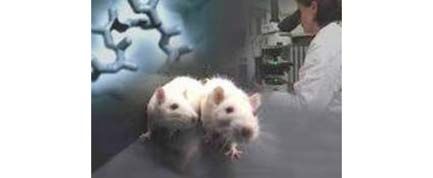Internal Body Clock Linked to Mania in Mice

The manic state that is at the ancient root of the word "maniac" might result from a screwed up body clock, new findings in mutant rodents suggest.
These novel mice could help unearth the roots of bipolar disorder—commonly known as manic-depression—which afflicts more than 1 in 40 adults, or roughly 5.7 million people, in the United States alone.
"This should allow us to develop better and more targeted therapies in the future," Colleen McClung, a neurobiologist at the University of Texas Southwestern Medical Center in Dallas, told LiveScience. Highs and lows
Although mania can nowadays innocently refer to any harmless passion, its medical definition and past meaning refer to a severe brain disorder with consequences ranging from hyperactivity and impulsive behavior to grandiose delusions and rage.
The excessive excitement associated with mania is often coupled with depression, resulting in alternating states of extreme highs and lows known as bipolar disorder. Unraveling the mechanisms at the core of bipolar disorder has proven difficult, hampering efforts to design therapeutic medicines, McClung explained.
The alternating cycles of mania and depression in bipolar disorder typically occur in regular patterns, suggesting to scientists that the disorder arises from abnormal circadian rhythms.
"It has long been speculated that abnormalities in a person's internal circadian clock can contribute to a wide range of disorders, including nearly all psychiatric disorders, sleep disorders, and even some aspects of heart disease and cancer," McClung said.
Sign up for the Live Science daily newsletter now
Get the world’s most fascinating discoveries delivered straight to your inbox.
Maniac mice
Over about three years, McClung and her colleagues tested mice with a mutant version of a critical circadian rhythm gene, dubbed Clock. The researchers discovered the rodents are the best lab animal version of human mania seen to date, suggesting this gene and potentially other circadian rhythm genes are deeply involved in the disorder.
The mice with the mutant Clock gene were hyperactive and slept less. They appeared less depressed when disturbed, for instance, persistently attempting to escape from a room that continuously shocked them instead of helplessly giving up. The rodents also were more likely to take risks, spending more time in the middle of an open field where they could get snapped up by a predator, and proved less daunted by bobcat urine.
And as is the case with the human version of mania, lithium alleviated the manic-like behaviors in these mutants. "This mouse allows us the opportunity to discover the mechanisms by which mood stabilizers like lithium lead to their therapeutic effects," McClung noted. "This has been somewhat of a mystery."
The findings indicate this gene and perhaps others involved in regulating an animal’s internal body clock are associated with at least the manic part of bipolar disorder.
The researchers say they would like to see if the mutant rodents cycle between excessive highs and lows the way bipolar humans do. "Thus far we have not seen any indication that these mice spontaneously go into a depressive state,” McClung said, “but this has not been thoroughly tested.”
Human substitutes
The rodents appeared to respond more strongly to stimulants such as cocaine or sucrose. Bipolar disorder is often linked with drug addiction, and the mice could help scientists understand why that is the case, McClung said of their findings, which are detailed online March 19 in the Proceedings of the National Academy of Sciences.
The mutant rodents could also shed light on the consequences of jet lag and other disruptions to one's circadian rhythm, or the body clock.
"For certain susceptible individuals, disruptions in normal sleep-wake rhythms or changes in season lead to severe depressive or manic episodes," McClung said. "Through better understanding of how the circadian system interacts with the circuits that regulate mood, this will greatly aid in our understanding of major depression, seasonal affective disorder, and other psychiatric disorders."











